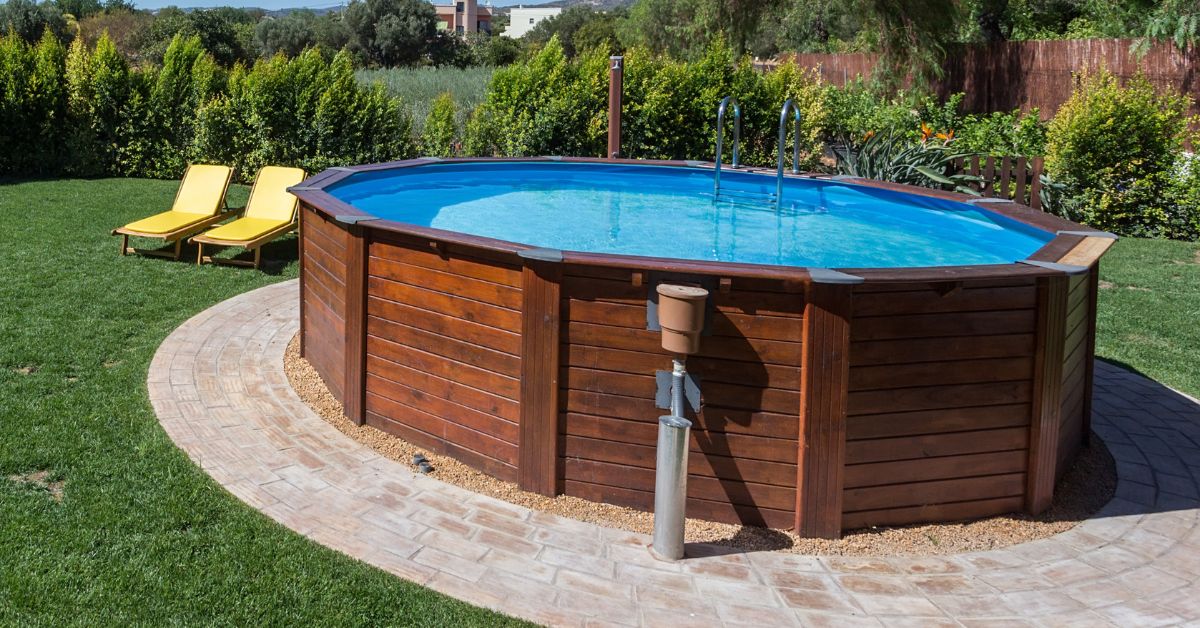We all love our above-ground pools, right? But there are certain reasons which necessitate to drained out completely. This easy and simple task can turn into a big problem if not done the job properly.
So what should you do? There are a few various ways to achieve the task of how to drain above ground pool, like spilling water out of an oversized bucket.
In this guide, we will look into some tips and techniques for draining your above-ground pool. Whatever the reason, you need to drain it for the winter season, some sort of repair job, or even to clean the bottom of pool. This blog will help you get it done without compromising the pool liner and its other parts.
When Is an Above-Ground Pool Need to Be Drained?
Numerous scenarios explain why this task must be completed. And while it may appear to be a quick fix, it is not always the best solution. Here are some of the most common scenarios in which pool owners want to drain their small water tubs:
Replacing the Water While Cleaning
New pool owners will try to above ground pool drain in order to replace it with clean pool water. While there are some situations where this is required, if the water is dirty, this is a cleaning and maintenance issue that should be resolved through proper pool chemicals and filtration. Make sure you’re using the proper number of chlorine tablets and that the pool pump and filter are running smoothly.
Moving the Pool
Unless you’re strong enough, moving a 10ft by 30ft pool of water is impossible. (And would struggle to keep the pool’s bottom smooth so that water didn’t pour over the edges.) Moving an above-ground pool can be done for a variety of reasons, including wanting more light, more shade, or less tree debris falling into the water, and draining the pool is a smart option in these cases.
Pool Liner Replacement
Let’s simply confess that it’s difficult to replace the lining on an above-ground pool without pouring the water out. While there are some underwater kits for patching the liner, if you are undertaking a full rebuild on the liner, you will have to empty the pool to find a leak in an above ground pool and repairments in the lining.
Shutting it Down for the Winter
While above-ground pools are fairly durable, they should not be left outside throughout the winter, especially in colder locations. Above ground pool preservation at the end of the season is part of the preparation for winter and the storage process for your pool.
Tools and Materials to Empty an Above Ground Pool
Here is the list of tools employed in the best way to drain pool.
Swimming Pool Cover Pump
The same submersible pump that prevents water from gathering on a pool cover can also be used to drain it. A submersible sump pump will also work.
Long Garden Hose
It should extend from the pool to the drainage point you’ve chosen.
Adapter to Drain Pool With Hose
If your pool has a built-in drain valve, you will need a hose adapter to connect it.
Utility Bucket
A regular bucket with a comfortable handle is ideal for draining the remaining few inches of water. Make sure it’s not so large that it’s difficult to raise once full. Remember that water weighs more than eight pounds per gallon.
How to Empty Above Ground Pool?
Emptying an above-ground pool isn’t a difficult task, but it does require some careful consideration and attention to ensure that you don’t cause any damage to the pool or the surrounding area. Here’s a basic guide to emptying an above-ground pool:
Take Safety First
Always make sure to turn off all power to the pool and its equipment before beginning the process of above ground pool maintenance.
Drain the Pool
There are three ways of draining the above-ground pool:
- Pool Cover Pump Method: With a garden hose attached, position a submersible pool cover pump in the center of the pool floor. Set the opposite end of the hose where you want the water to drain.
Then turn on the pump and start draining. Do not walk away; you must confirm that the pump is operational and that the water drains properly. Once you’ve reached the last few inches, remove the pump and use a bucket or vacuum to drain the remaining liquid. You can also do this while disassembling the pool. - Drain Pool With Hose Method: If your pool has a built-in drain, the job is rather simple. The pool presumably came with a drain adapter that could be connected to a hose.
Connect the adapter to the hose, open the pool’s drain cover (there may also be one inside the pool that needs to be opened), insert the adapter, and observe the water drain. You may need a bucket or a shop vacuum to drain the final few inches according to the size of your pool. - Using a Garden Hose Siphon Method: It is the original DIY drainage technique. Put a long garden hose in the pool to submerge both ends. Continue to push down parts of the hose until all of the air bubbles have been released and the hose is full of water. (You may need to get in the pool to complete this.) Put your finger or hand over one end of the hose and pull it out of the pool.
Wait until you are below the waterline before releasing it. When you reach that point, the water should start to drain. Drain the remaining water using a bucket, shop vacuum, or during pool dismantling. This is the best way to drain a pool. - Alternative option: Attach one end of the hose to the water spigot and place the other end in the pool. Turn on the water and allow the hose to fill up. Then, remove the hose from the spigot. The water should start to drain.
Protect the Grass
If you’re draining an above ground pool onto a lawn or garden, you may want to move the hose around periodically to avoid flooding one area. Too much water in one spot can damage the grass or soil.
Chemicals Used in Pool
Before you drain the pool, make sure to adjust the pH and chlorine levels as required. You don’t want to empty the pool with high levels of chlorine, as this could damage the grass and soil. Get a piece of expert advice from a swimming pool renovation company.
Try to Empty it Slowly
If your pool is very large, it may be better to drain it in stages rather than all at once. This can help to prevent any damage to the pool or the ground around it.
Clean the Pool
Once the above ground pool drain completely, you can use a hose to rinse the sides and bottom of the pool to eliminate any remaining debris or dirt. You can also use a brush or a pressure washer for this.
Store Equipment
Make sure to clean and store any pool equipment (such as filters, pumps, or heaters) according to the manufacturer’s instructions.
Close the Pool
If you’re closing the pool for the season, make sure to cover it with a pool cover. It will keep debris out and protect the pool from the external elements.
Final Step
Lastly, make sure to properly dispose of the water. Depending on the local regulations, you may need to take it to a designated disposal site or have it removed by a professional.
When to Call a Professional While Draining an Above-Ground Pool
If you detect water backing up from a floor drain while emptying your pool, or if water begins to pool in the discharge area at a rate or volume that could cause damage, stop immediately and contact us for professional handling of this process. A pool holds hundreds of gallons of water, which can rapidly flood a basement or cause water damage if not properly drained.
Wrap Up!
Above mentioned are the techniques on how to drain a pool fast and conveniently. We have discussed the causes that lead to drainage of pools as well. It will make you understand the process. So, as the winter marches in, make your pool reserved for summer and beat the heat.






